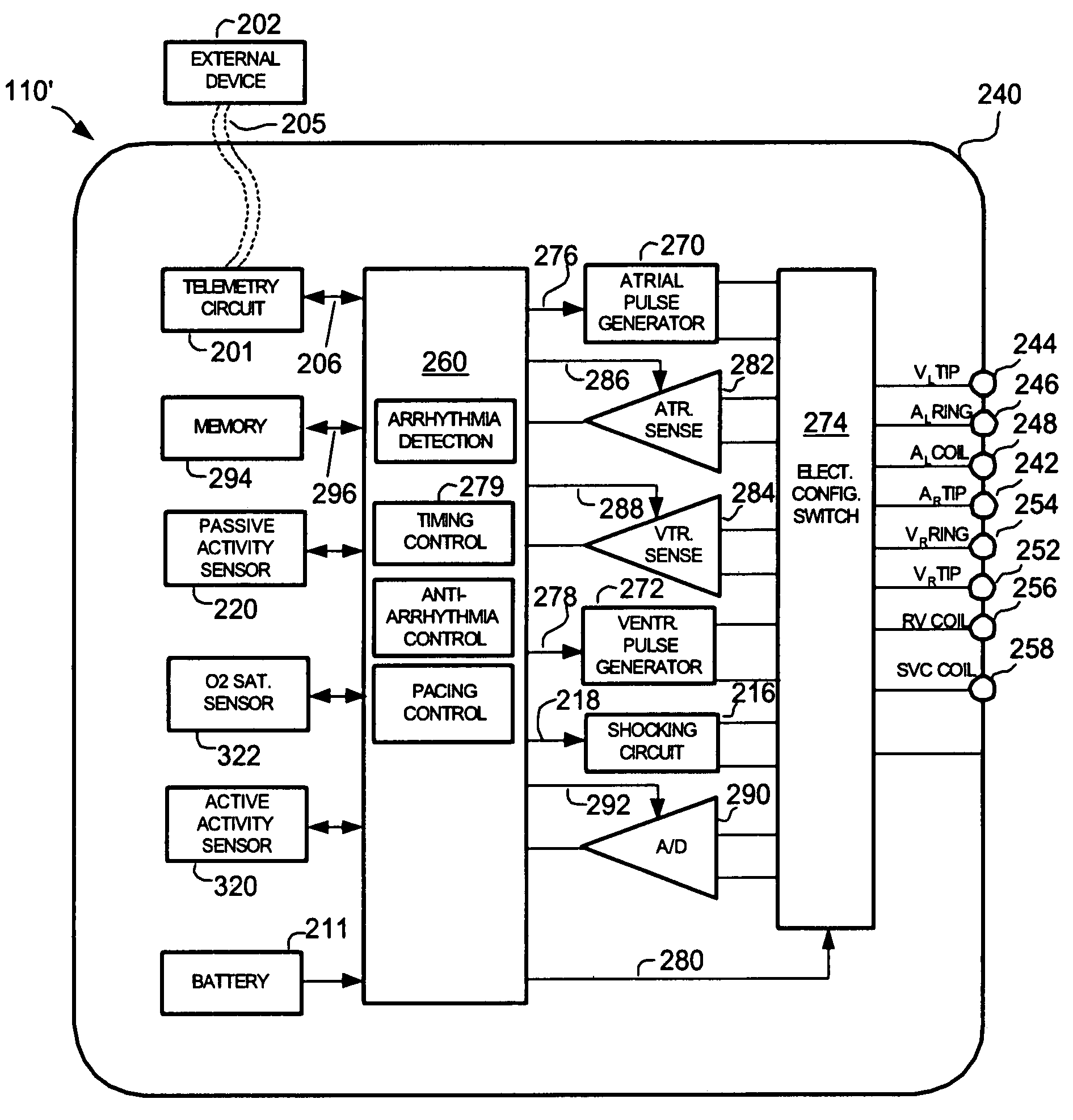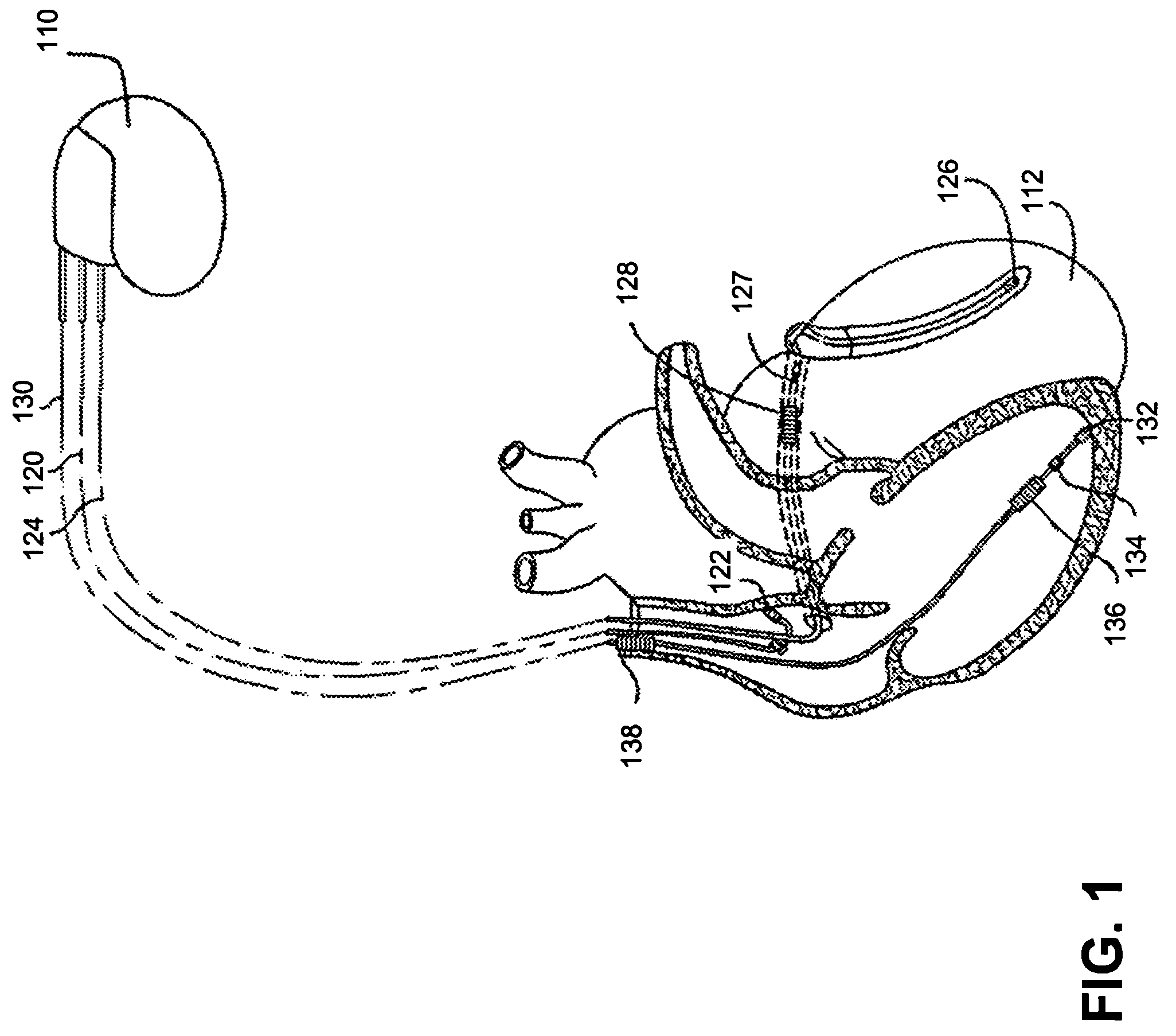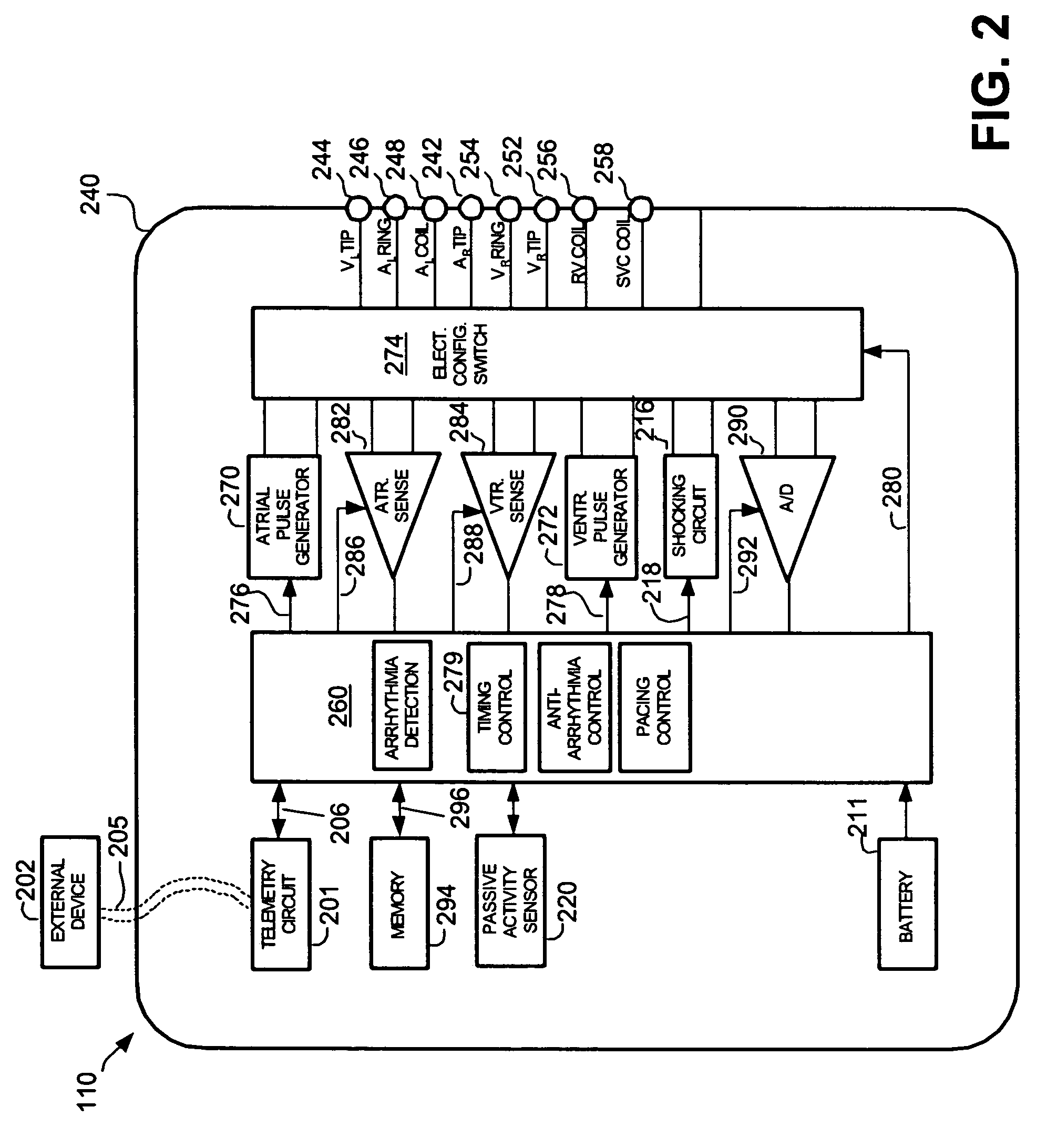Complimentary activity sensor network for disease monitoring and therapy modulation in an implantable device
a sensor network and activity sensor technology, applied in the field of implantable medical devices, can solve the problem that limited analysis can be based on one dimension of activity, and achieve the effect of energy efficien
- Summary
- Abstract
- Description
- Claims
- Application Information
AI Technical Summary
Benefits of technology
Problems solved by technology
Method used
Image
Examples
Embodiment Construction
Exemplary Pacing Device
[0023]Before describing specific embodiments of the present invention, it is useful to first describe an exemplary environment in which the invention may be implemented. Referring to FIG. 1, an exemplary implantable cardiac device 110 (also referred to as a pacing device, a pacing apparatus, a stimulation device, or simply a device) is in electrical communication with a patient's heart 112 by way of three leads, 120, 124 and 130, suitable for delivering multi-chamber stimulation. While not necessary to perform embodiments of the present invention, the exemplary device 110 is also capable of delivering shock therapy.
[0024]To sense atrial cardiac signals and to provide right atrial chamber stimulation therapy, the stimulation device 110 is coupled to an implantable right atrial lead 120 having at least an atrial tip electrode 122, which typically is implanted in the patient's right atrial appendage. To sense left atrial and ventricular cardiac signals and to pro...
PUM
 Login to View More
Login to View More Abstract
Description
Claims
Application Information
 Login to View More
Login to View More - R&D
- Intellectual Property
- Life Sciences
- Materials
- Tech Scout
- Unparalleled Data Quality
- Higher Quality Content
- 60% Fewer Hallucinations
Browse by: Latest US Patents, China's latest patents, Technical Efficacy Thesaurus, Application Domain, Technology Topic, Popular Technical Reports.
© 2025 PatSnap. All rights reserved.Legal|Privacy policy|Modern Slavery Act Transparency Statement|Sitemap|About US| Contact US: help@patsnap.com



